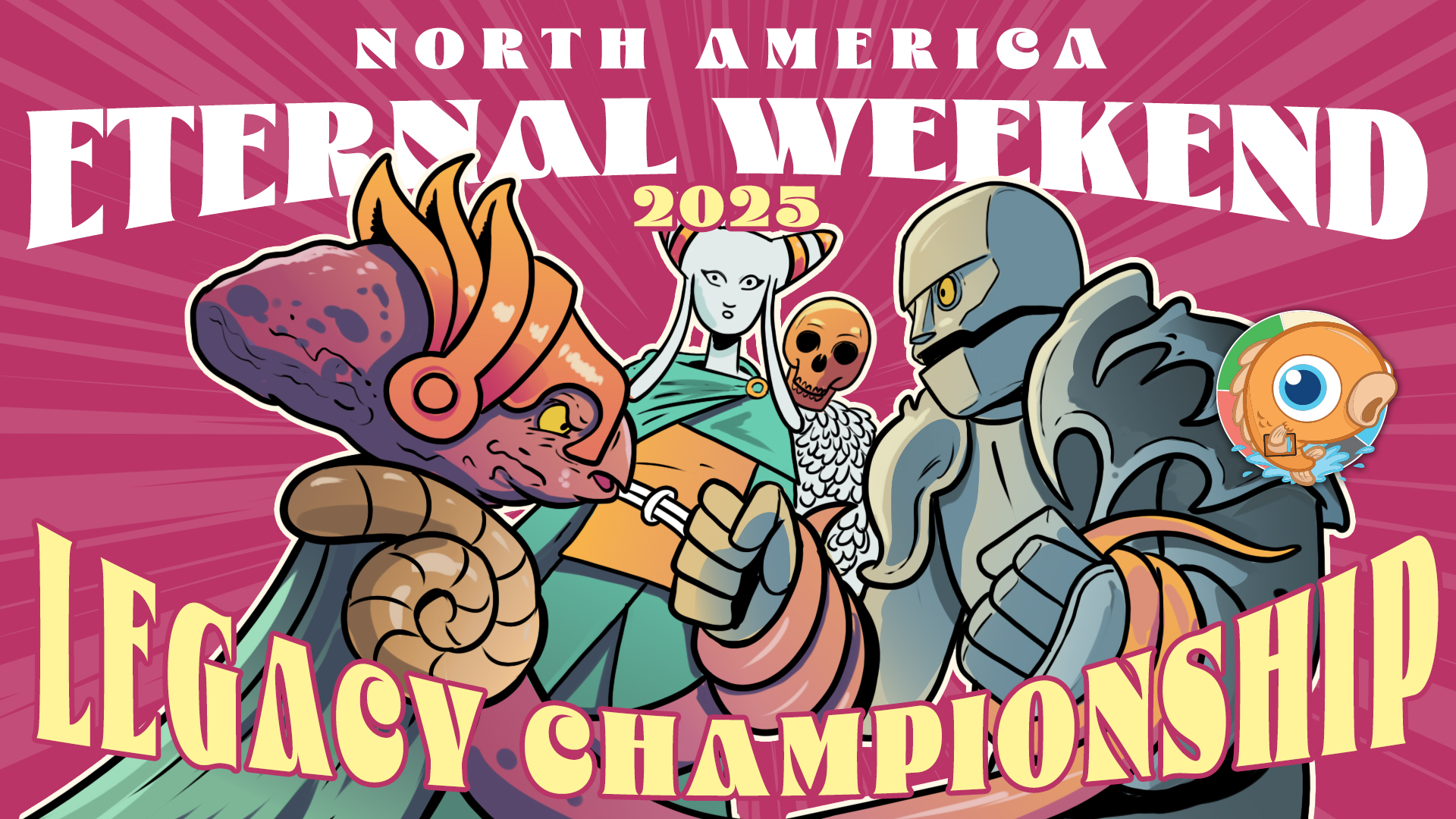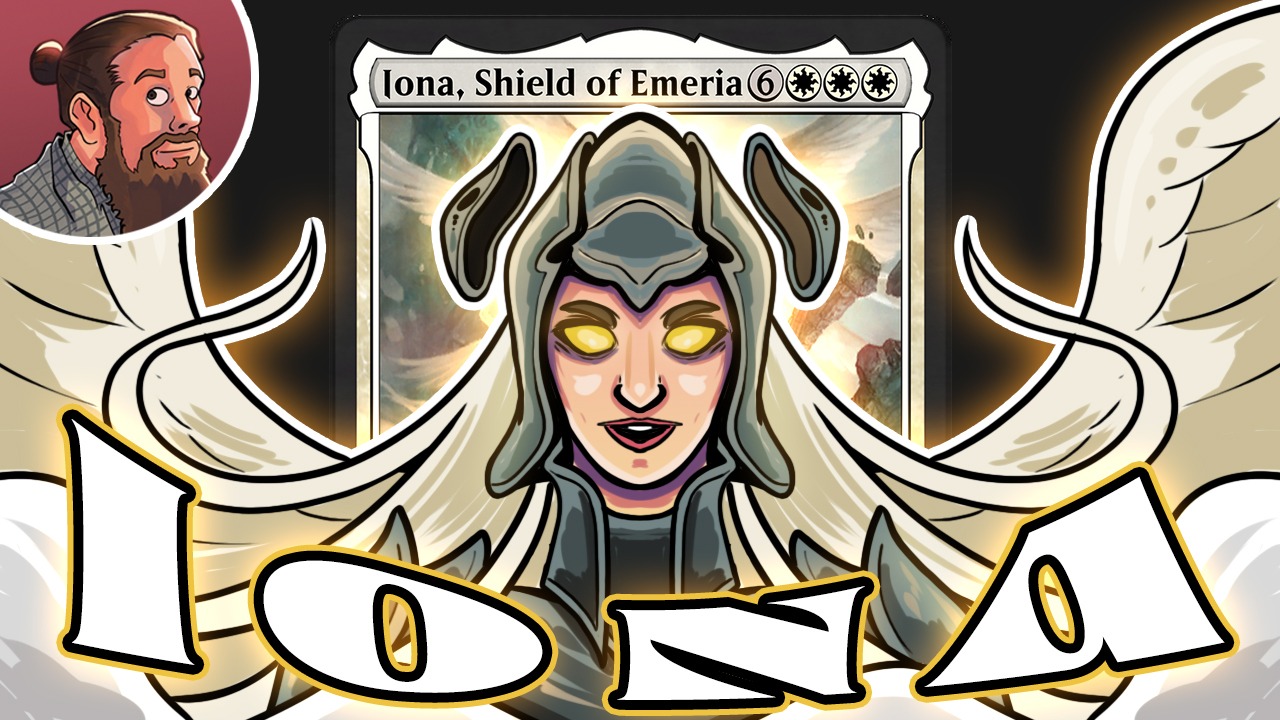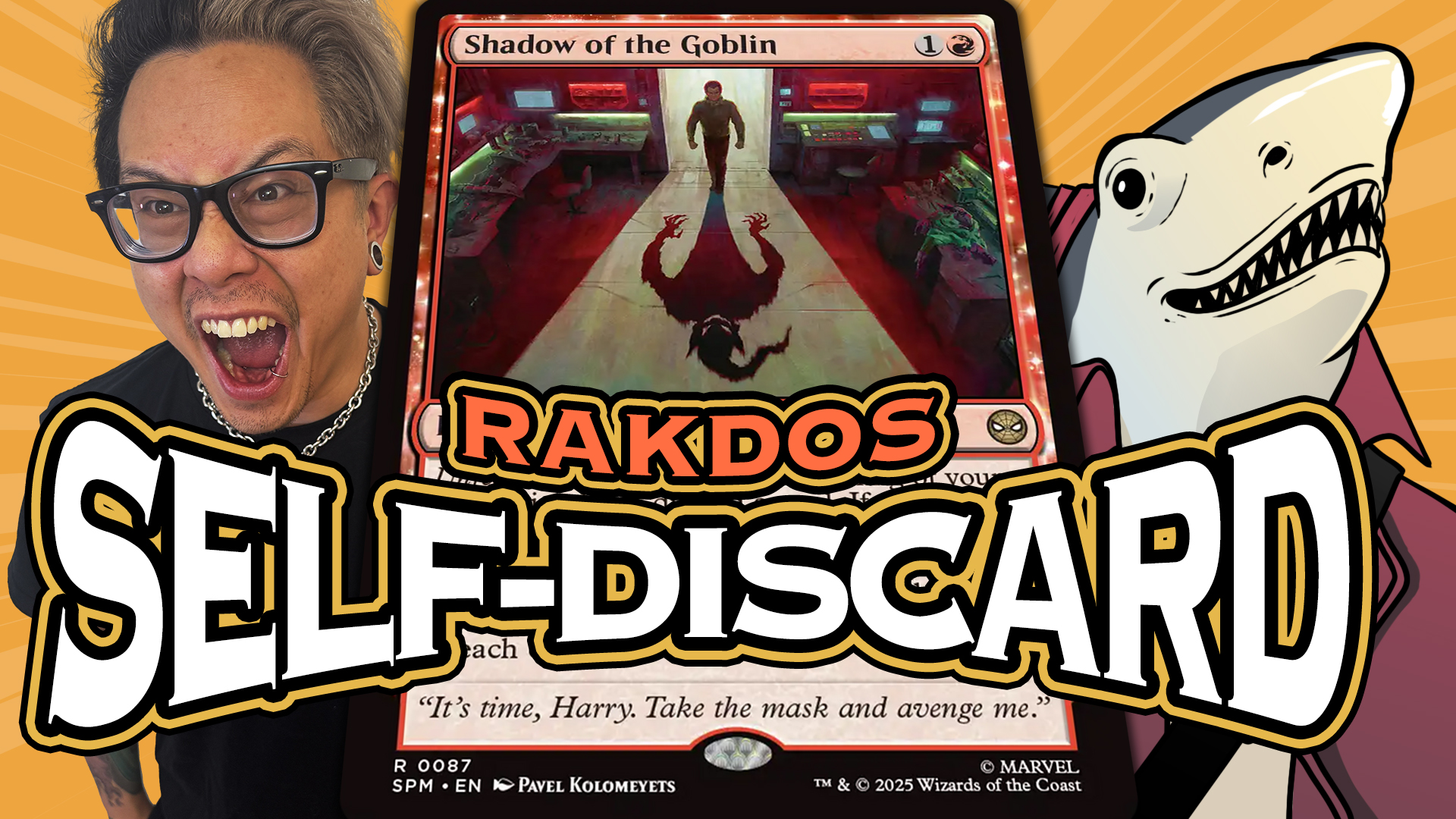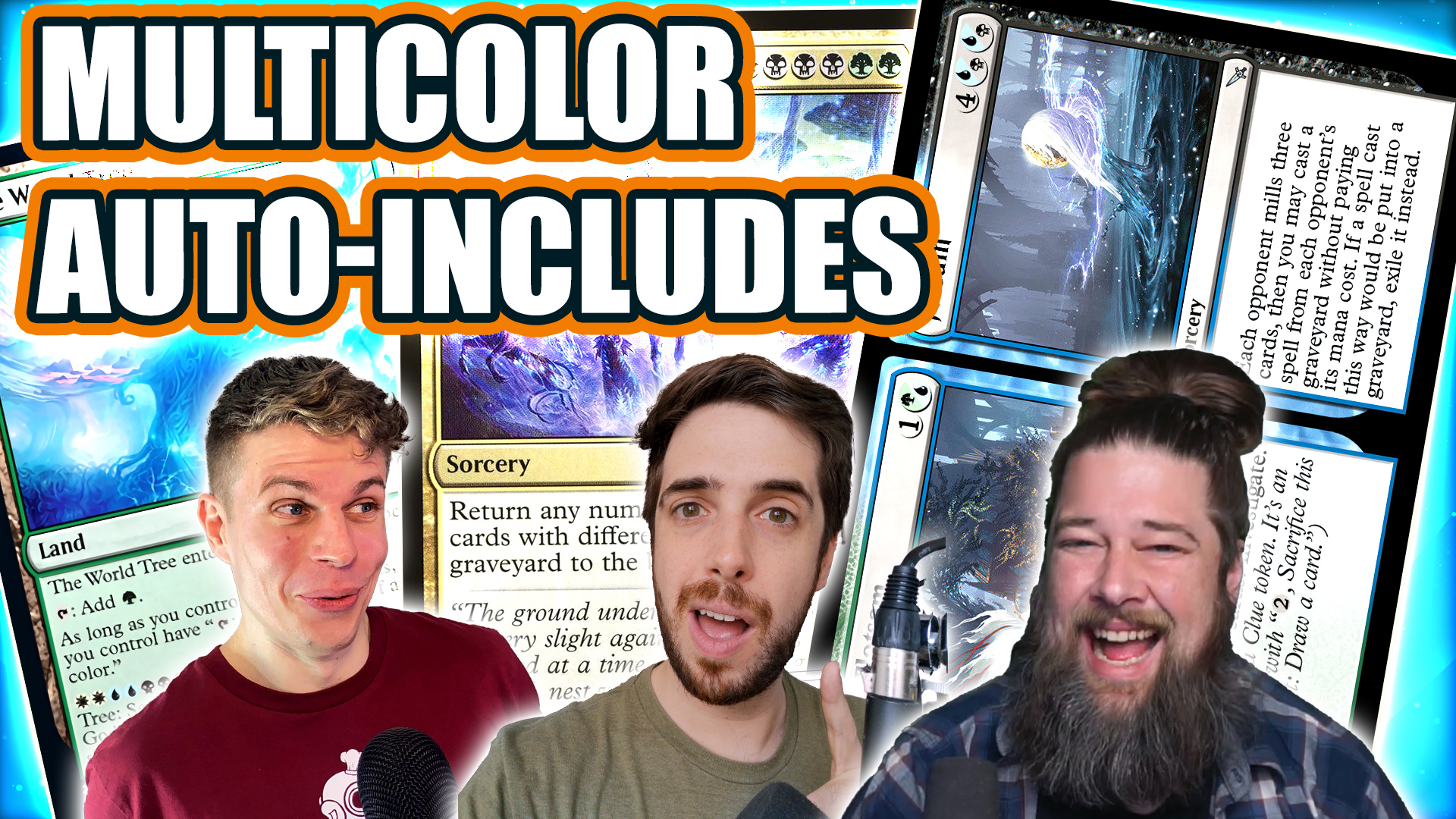Budget Magic: $80 (25 tix) Haphazard Ramp (Standard)
ታዲያስ, Budget Magic lovers, it's that time once again! This week, we are heading to Standard to do one of my favorite things in all of Magic: blow up lands! What's the best way to blow up lands in Standard? Haphazard Bombardment, of course! The basic idea of today's deck, which is an adaptation of a deck that Zac Elsik sent me a little while ago (so shout out to Zac for the idea and shell!), is pretty simple. We're essentially a ramp deck, so we spend our early turns ramping into our big plays. The unique aspect of the deck is what we're ramping into: primarily cards to blow up our opponent's lands but also sweepers and Sifter Wurm! Can a land-destruction deck work in Standard? Let's get to the video and find out; then, we'll talk more about the deck!
First, a quick reminder: if you enjoy the Budget Magic series and the other video content on MTGGoldfish, make sure to subscribe to the MTGGoldfish YouTube channel to keep up on all the latest and greatest.
Budget Magic: Haphazard Ramp (Standard)

The Deck
Haphazard Ramp is essentially a ramp deck, but instead of ramping into big creatures, our main goal is to ramp into land-destruction spells like Haphazard Bombardment, Star of Extinction, and Memorial to War. After blowing up a ton of our opponent's lands, we eventually close out the game with the help of Sifter Wurm or by our opponent scooping in frustration. While the deck looks pretty crazy on paper thanks to a ton of aftermath cards, it actually breaks down neatly into four parts: ramp, land destruction, removal, and finishers.
The Ramp


Spring // Mind and Gift of Paradise get our ramp plan started on Turn 3, with both cards giving us an extra mana and a bit of upside. Spring // Mind doubles as a very expensive Divination in the late game thanks to aftermath, helping to ensure that we keep drawing a steady stream of land destruction to keep our opponent as low on resources as possible. Meanwhile, Gift of Paradise gives us a way to add mana of any color, which is important because we have a few aftermath cards that need black mana but don't have any actual black lands in our deck. Together, these cards help make sure that we have five mana available on Turn 4 as consistently as possible.

If we can play a Gift of Paradise or Spring // Mind on Turn 3, Hour of Promise is the perfect follow up on Turn 4, ramping us from five mana to seven or eight mana on Turn 5, which is enough to play anything in our deck. More importantly, Hour of Promise allows us to tutor up non-basic lands. In the early game, this is most often Deserts to make sure we are getting the two 2/2 Zombie tokens. Then, in the late game, we are often tutoring up Memorial to War (probably better known as the bad Memorial) to destroy our opponent's lands.

Thaumatic Compass is probably the strangest ramp spell in our deck, since it doesn't ramp us as obviously as Gift of Paradise, Spring // Mind, or Hour of Promise, but it still gets the job done. In the early game, Thaumatic Compass helps make sure that we are hitting our land drops every turn, which is pretty important—if we don't have anything else to do, we can simply spend three to find a basic land. Eventually, we get up to seven lands, and then Thaumatic Compass flips around into Spires of Orazca, which not only gives us an extra land but a land that can help on defense, Maze of Ithing our opponent's best attacker each turn.
Land Destruction

The namesake Haphazard Bombardment is the cornerstone of our deck. At first glance, Haphazard Bombardment looks pretty bad, since the permanent we blow up each turn is somewhat random; however, we do have a way of breaking the randomness. When we cast Haphazard Bombardment, we simply put counters on four of our opponent's lands, which means that we are getting a free Stone Rain for our next three end steps, with the end result being that our opponent has three fewer lands on the battlefield.
Of course, we can name non-land permanents like a planeswalker or annoying creatures in a pinch, but ideally, we'll be in a position where we can keep other permanents under control with our various removal spells and sweepers so Haphazard Bombardment can focus exclusively on lands.
The other interesting part of Haphazard Bombardment is that it works really well in multiples. The basic play pattern is that we cast our first copy of Haphazard Bombardment and blow up three lands over the next three turns, which leaves our opponent with one land with an aim counter. The second copy of Haphazard Bombardment comes down and puts aim counters on four more lands (for a total of five lands with aim counters). Both copies of Haphazard Bombardment trigger at the end of our turn, blowing up two lands. Then, at the end of our next turn, we blow up two more lands, which often puts our opponent down to just about nothing, especially when combined with the rest of our land-destruction spells.

Consign // Oblivion can technically bounce anything, but the main reason it is in our deck is so we can pick up and reset Haphazard Bombardment. Once we run out of aim counters, we can wait until the end of our opponent's turn, target our Haphazard Bombardment with Consign, and then recast Haphazard Bombardment during our turn to blow up even more lands. Meanwhile, the Oblivion half of the card is even better in our deck than most because of our land destruction. If we can blow up a lot of lands, our opponent is often stuck with powerful cards in hand that they can't cast thanks to the lack of mana. Consign aftermaths from our graveyard to clean out those cards and help make sure that even if our opponent eventually draws out of their mana problems, they won't have many good cards left to cast.

Memorial to War is pretty insane in our deck, even though it's generally considered the worst of the Memorial cycle. In the late game, we can tutor up two copies at a time with Hour to Promise, and then we can use Memorial to War to blow up any lands that happen to slip through the cracks of our Haphazard Bombardment. Just make sure to target lands that don't have aim counters, if possible!

Technically, Star of Extinction is a removal spell, sweeping away essentially all creatures and planeswalkers on the battlefield, but we're going to throw it in the land-destruction category because it does blow up a land. Our deck has almost no creatures (just four Sifter Wurms) and no planeswalkers, so we naturally break the symmetry of Star of Extinction. While it's very expensive, we can cast it as early as Turn 5 thanks to all of our ramp spells, sweeping away our opponent's board and putting them down a land to boot. While just a two-of, Star of Extinction is a great way of staying alive while also fitting with the land-destruction theme of our deck.
The Finishers

While we sometimes win with our opponent scooping in frustration once they lose all of their lands (and along with their lands, the ability to play Magic), we have three plans if we actually have to kill our opponent. The first is Sifter Wurm, which is surprisingly good in our deck. While a 7/7 trample is a fine way of closing out the game, especially if our opponent doesn't have many lands and has had their board repeatedly wrathed with Star of Extinction and Hour of Devastation, Sifter Wurm is also a key stabilization card. One of the reasons our deck has so many weird aftermath cards is that they work really well with Sifter Wurm's scry ability because their converted mana cost is technically the combined mana cost of both halves of the card. This means that if we can scry a Spring // Mind to the top with Sifter Wurm, we gain a massive 10 life, making it a great way to stay away from the danger zone, while Consign // Oblivion, Star of Extinction, and additional copies of Sifter Wurm each gain us seven life. Finally, the scry itself is helpful, digging us to sweepers or land-destruction spells to keep the pressure on our opponent while moving useless lands to the bottom of our deck. All around, the combination of these factors makes Sifter Wurm the perfect creature for our deck.


We have two backup plans for closing out the game if our opponent doesn't scoop to our land destruction and we can't win with Sifter Wurm. The first is Cut // Ribbons. The power of Cut // Ribbons is that it's a fine removal spell in the early game, killing most creatures for just two mana. Then, in the late game, we can use Gift of Paradise to make two black mana and drain our opponent for a massive amount of life thanks to all of our ramp. In the late game, we often get our opponent down to a few lands, drain for 10 with Ribbons, untap, and drain for another 10 to close out the game. Meanwhile, Ipnu Rivulet is our backup backup plan. While the land is mostly in our deck to make sure we have enough Deserts to make Zombie tokens with Hour of Promise, especially against control decks, where the game goes super long, we can sacrifice all of our Deserts in the late game over the course of a few turns and mill our opponent out of the game.
Removal
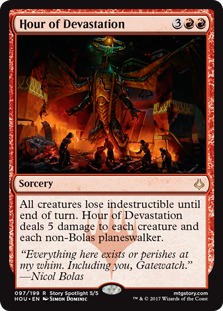

While we've already talked about many of our removal spells since they fit in other categories (with Star of Extinction being removal and land destruction, Thaumatic Compass being removal and ramp, and Cut // Ribbons being removal plus a finisher), we do have a couple more removal spells in our deck. Hour of Devastation is one of the most important cards in our deck, especially against aggro, where we can cast it as early as Turn 4 thanks to our ramp, sweep away all of our opponent's creatures, and then proceed to attack our opponent's lands with Haphazard Bombardment and friends. Meanwhile, Struggle // Survive scales extremely well with our ramp, killing most early-game creatures on Turn 3 and then taking down huge creature in the late game thanks to Spring // Mind and Hour of Promise giving us extra lands. Also, keep in mind that if you run into a Scarab God or God-Pharaoh's Gift deck, the Survive part of Struggle // Survive is a great main-deck answer to our opponent's graveyard (although it does make it a lot harder to win with the Ipnu Rivulet mill plan).
Wrap-Up
While Haphazard Ramp looks pretty janky on paper, it actually plays incredibly well—well enough, in fact, that we finished our five matches with a perfect 5-0! While we played a couple of weird decks along the way like Mono-Blue Favorable Winds, we also beat God-Pharaoh's Gift, Esper Control, and Mono-Black, all of which are solid Standard decks, so it's not like we just beat up on rogue brews. Against the UB God-Pharaoh's Gift deck, we even managed to win a game where our opponent got a Turn 5 God-Pharaoh's Gift with Gate to the Afterlife and kept it on the battlefield for a massive 10 turns! All in all, Haphazard Ramp is a great example of a deck that looks bad—or at least weird—on paper, but once you start playing games, it becomes clear that it's very powerful.
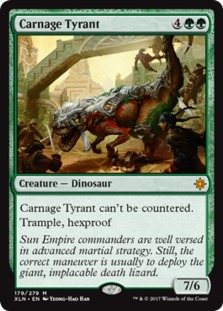


As far as upgrades to the deck, I'm not sure there's really much to change. The original deck from Zac had an additional copy of Carnage Tyrant in the sideboard, but I had to cut it for budget purposes, so if you have an extra, you should probably throw it in. Nezahal, Primal Tide can also sort of fill the same role in an even more budget-friendly manner. While we managed to beat control anyway with a combination of our one Carnage Tyrants and Ipnu Rivulet mill, Carnage Tyrant is pretty insane in our deck, since most control opponents remove every way of dealing with it after sideboarding, allowing us to steal games for free in games two and three. I also toyed with adding some black mana to the deck for our aftermath cards, but I realized that we'd need to have black lands for it to really matter thanks to the double-black aftermath of Cut // Ribbons, and adding two black lands makes the mana pretty clunky. I could imagine adding a black / X cycling land or two, but we're usually able to cast our aftermath cards eventually thanks to Gift of Paradise anyway, so it's probably not worth the effort.
All in all, Haphazard Ramp was great. Not only does it win, but it wins in a really unique, fun way. If you're a fan of decks like Modern Ponza and like frustrating opponents by blowing up their lands, Haphazard Ramp is likely the perfect budget Standard deck for you! While it sounds strange, the deck actually felt good enough to compete at the FNM level or in leagues on Magic Online. While going 5-0 every time is probably a stretch, Standard decks simply aren't prepared for an endless stream of land destruction, making the Haphazard Bombardment plan oddly effective in our current format! If you like blowing up lands and making opponents sad, give Haphazard Ramp a shot!

Getting Haphazard Ramp down under $50 is actually pretty easy. The main cut is Carnage Tyrant, which we drop for Nezahal, Primal Tide. While technically this is a downgrade, Nezahal, Primal Tide is still a great sideboard plan for closing out games against control decks. Otherwise, we drop Sulfur Falls and Rootbound Crag for two copies of Evolving Wilds and a couple of the tapped dual lands. Overall, the changes do represent a downgrade to the deck, but they're very slight downgrades. If you go this direction, I'd look to upgrade the mana first and then splurge on Carnage Tyrant eventually (although Carnage Tyrant is a good card to have in your collection because control is looking strong after rotation and Carnage Tyrant is one of the best threats in Standard against control decks).

For our non-budget list this week, we have the original Haphazard Ramp deck from Zac Elsik. It's very similar to the one we played in the videos, with the main upgrade being a second Carnage Tyrant. Apparently, he's been having a lot of success with the deck on Magic Online, so this is probably a good starting point if you want the optimal build!
Conclusion
Anyway, that's all for today. As always, leave your thoughts, ideas, opinions, and suggestions in the comments, and you can reach me on Twitter @SaffronOlive or at SaffronOlive@MTGGoldfish.com.


